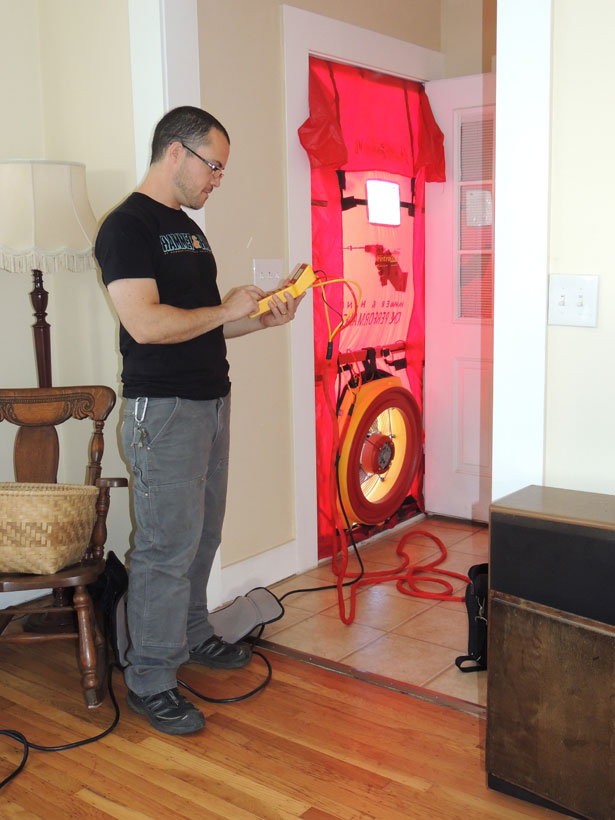Elsass explains importance of air tightness for home performance, as measured by blower door test.
Last Monday Jeff published a nice video of Tom Elsass, Building Analyst and Retrofit Manager for Hammer & Hand, explaining the nuts and bolts of home energy retrofits and how we approach home performance from a solid grounding in building science.
As a follow-up, Tom just shared this note and photos from the field…
One of the primary goals of a home energy retrofit is to greatly reduce the air leakage of a house. Homeowners experience this air leakage as draftiness, often concentrated into breezy spots in the house. These drafts and breezes are the result of conditioned air within the home escaping through holes in the building and being replaced with un-conditioned air coming in at other points. We call this process the ‘stack effect’.
With effective air sealing measures, these drafts can be eliminated.
This morning we performed a quality assurance blower door test to determine how much air leakage we had removed on our latest home energy retrofit. The test both verified that we are on track to deliver the comfort and efficiency promised and allowed us to make sure the installed work is performing properly.
Hammer & Hand’s Jeremy Rosenbloom conducts blower door test at the home.After touching up a few missed spots of air sealing in the basement and attic, we surpassed our target air leakage reduction and improved overall air tightness of the home by 38%. This improvement will both make for a more comfortable home and reduce the amount of energy used to heat and cool the building.
Other energy upgrades completed in the home include insulation and a new furnace and water heater. Thanks to these home energy retrofit measures, coupled with quality-tested air tightness, the homeowners can look forward to a future of warm, cozy, and efficient living in their 1920s house.
For more about home performance, please visit our home energy services page where you’ll find a step-by-step explanation of the process as well as lots of video and blog content delving into the details.
– Zack
Back to Field Notes